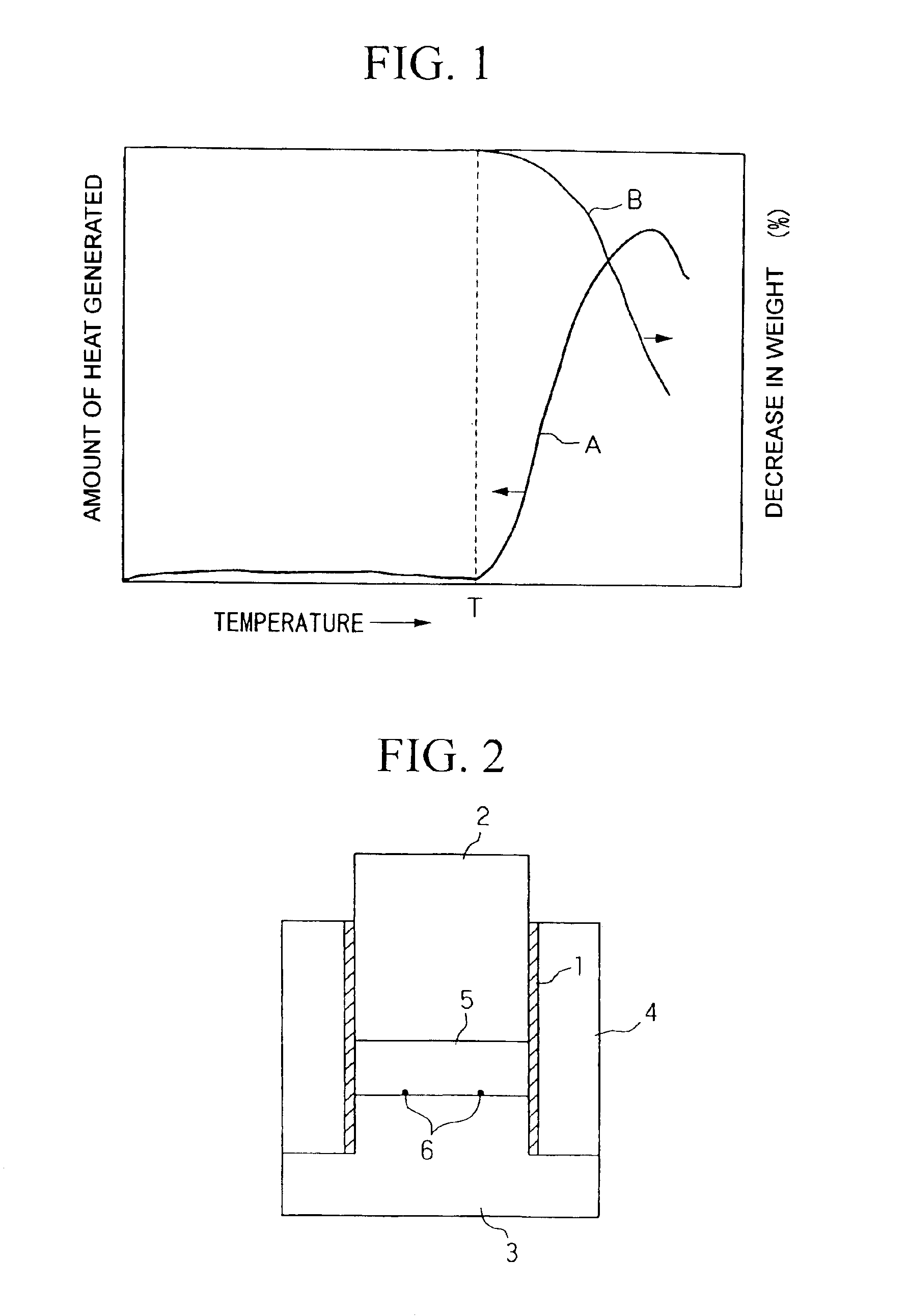Carbonaceous material for cell and cell containing the carbonaceous material
a carbonaceous material and cell technology, applied in the field of carbonaceous material for lithium batteries, can solve the problems of reducing the use efficiency of lithium, reducing the efficiency of graphite crystallization, and aggressively studying but not yet completely elucidated, and achieves excellent cycle properties, high charge and discharge efficiency, and large discharge capacity.
- Summary
- Abstract
- Description
- Claims
- Application Information
AI Technical Summary
Benefits of technology
Problems solved by technology
Method used
Image
Examples
example 1
[0093]Coke A was coarsely pulverized in a pulverizer (manufactured by Hosokawa micron K.K.) into a size of from 2 to 3 mm or less. This coarsely pulverized product was finely pulverized in a jet mill (IDS2UR, manufactured by Nippon Neumatic K.K.). At this time, 96% (% means % by weight, hereinafter the same) of the coarse particles having a particle size of 35 μm or more were continuously removed. The powder particles were air-classified in a turbo-classifier (TC15N, manufactured by Nisshin Engineering K.K.) to remove particles having a particle size of 5 μm or less. At this time, the average aspect ratio was 4.0. A part of this pulverized product (15 kg) was sealed into a graphite crucible with a cover having an internal diameter of 40 cm and a volume of 40 l, the crucible was placed in a graphitizing furnace with a graphite heater and the powder was graphitized at a temperature of 2,800° C. The powder was left standing to cool and taken out to obtain 14 kg of powder. This powder w...
example 2
[0095]Coke A was coarsely pulverized in a pulverizer (manufactured by Hosokawa micron K.K.) into a size of from 2 to 3 mm or less. This coarsely pulverized product was finely pulverized in a jet mill (IDS2UR, manufactured by Nippon Neumatic K.K.). At this time, 95% of the coarse particles having a particle size of 50 μm or more were continuously removed. The powder particles were air-classified in a turbo-classifier (TC15N, manufactured by Nisshin Engineering K.K.) to remove particles having a particle size of 5 μm or less. At this time, the average aspect ratio was 3.9. A part of this pulverized product (15 kg) was sealed into a graphite crucible with a cover having an internal diameter of 40 cm and a volume of 40 l, the crucible was placed in an Acheson furnace and the powder was graphitized at a temperature of 2,900° C. The powder was left standing to cool, taken out, and unbinded using SPARTAN-RYUZER to obtain 14 kg of powder. This powder was passed through a 270 mesh (53 μm) ac...
example 3
[0096]Coke A was coarsely pulverized in a pulverizer (manufactured by Hosokawa micron K.K.) into a size of from 2 to 3 mm or less. This coarsely pulverized product was finely pulverized in a jet mill (IDS2UR, manufactured by Nippon Neumatic K.K.). At this time, 95% of the coarse particles having a particle size of 50 μm or more were continuously removed. The powder particles were air-classified in a turbo-classifier (TC15N, manufactured by Nisshin Engineering K.K.) to remove particles having a particle size of 5 μm or less. At this time, the average aspect ratio was 4.0. To a part of this pulverized product (14.4 kg), 0.6 kg of boron carbide (B4C) was added and mixed in a Henschel mixer at 800 rpm for 5 minutes. The mixed powder was sealed into a graphite crucible with a cover having an internal diameter of 40 cm and a volume of 40 l, the crucible was placed in a graphitizing furnace with a graphite heater and the powder was graphitized at a temperature of 2,900° C. The powder was l...
PUM
 Login to View More
Login to View More Abstract
Description
Claims
Application Information
 Login to View More
Login to View More - R&D
- Intellectual Property
- Life Sciences
- Materials
- Tech Scout
- Unparalleled Data Quality
- Higher Quality Content
- 60% Fewer Hallucinations
Browse by: Latest US Patents, China's latest patents, Technical Efficacy Thesaurus, Application Domain, Technology Topic, Popular Technical Reports.
© 2025 PatSnap. All rights reserved.Legal|Privacy policy|Modern Slavery Act Transparency Statement|Sitemap|About US| Contact US: help@patsnap.com

